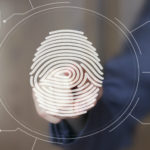Banks face the challenge of verifying the identity of new customers
Millennials do not intend to go into a branch in their lives. They're used to taking out all services online and want to have the same facility with banks. But, as highlighted in the BBVA Research article “Digital contracting of financial services: electronic identity as a key element” there is no regulatory framework allowing banks to remotely verify the identity of new customers.

While Google, Facebook or Skype need not verify the actual identity of the person accessing their services — not even Amazon — registering with a bank is not so easy. “The regulatory framework affecting registering customers in the financial sector is not completely homogeneous globally. Some countries prohibit the registration processes through digital channels and require a physical meeting to proceed with customer identification and verification of their identity. Moreover, in those places where non face-to-face contracting is permitted, it is sometimes difficult to establish mechanisms for verifying identity in these digital channels that reveal, unequivocally, who the customer is," highlights the Article.
In Mexico, for example, one of the objectives of the bank in 2016 is to strengthen controls and in recent months reading fingerprints has been extended to identify customers and open new accounts. As highlighted in this article in El Universal, “with a customer's fingerprint and photograph, identity theft is impossible when the fingerprints are already registered”.
The security problem is growing, as highlighted in this article by BBVA Research: According to the for Strategic and International Studies (CSIS), the cost of cybercrime to the global economy is about $450 billion. In addition, the Ponemon Institute reports that in 2013, 43% of US companies experienced a breach of data security. Individually, the greatest risks are identity theft and loss of confidential information. The CSIS estimates that there were 800 million stolen personal records in the same year worldwide. In South Korea, for example, in a month, over 70% of people aged between 15 and 65 had their personal data stolen and their credit cards were put at risk. In the US, according to a 2012 survey conducted by the Bureau of Justice Statistics, phishing affected 16.6 million people, at a cost of $24.7 billion in financial losses.
And how can identification be guaranteed? As highlighted by BBVA Research: The regulatory framework affecting registering customers in the financial sector is not completely homogeneous globally. Some countries prohibit the registration processes through digital channels and require a physical meeting to proceed with customer identification and verification of their identity. Moreover, in those places where non face-to-face contracting is permitted, it is sometimes difficult to establish mechanisms for verifying identity in these digital channels that reveal, unequivocally, who the customer is," highlights the Article.
Some countries prohibit the registration processes through digital channels and require a physical meeting to proceed with customer identification and verification of their identity
Returning to Millennials and the previous generation, "a survey by Telstraglobal on generations X and Y (those born between 1966-1976 and 1977-1994, respectively) indicates that more than half of respondents rate trust as the most important factor of choice when selecting a financial services provider. One in five people would share their DNA to help protect their financial and personal information, and up to one in two people would be willing to pay for a mobile identity. In addition, less than half are satisfied with their institution's security, more than a third have experienced phishing, 40% of victims believed it was the institution's fault and 65% is likely to leave the bank as a consequence of this."
2016 promises to be the breakout year for biometrics. And banks cannot be left behind.